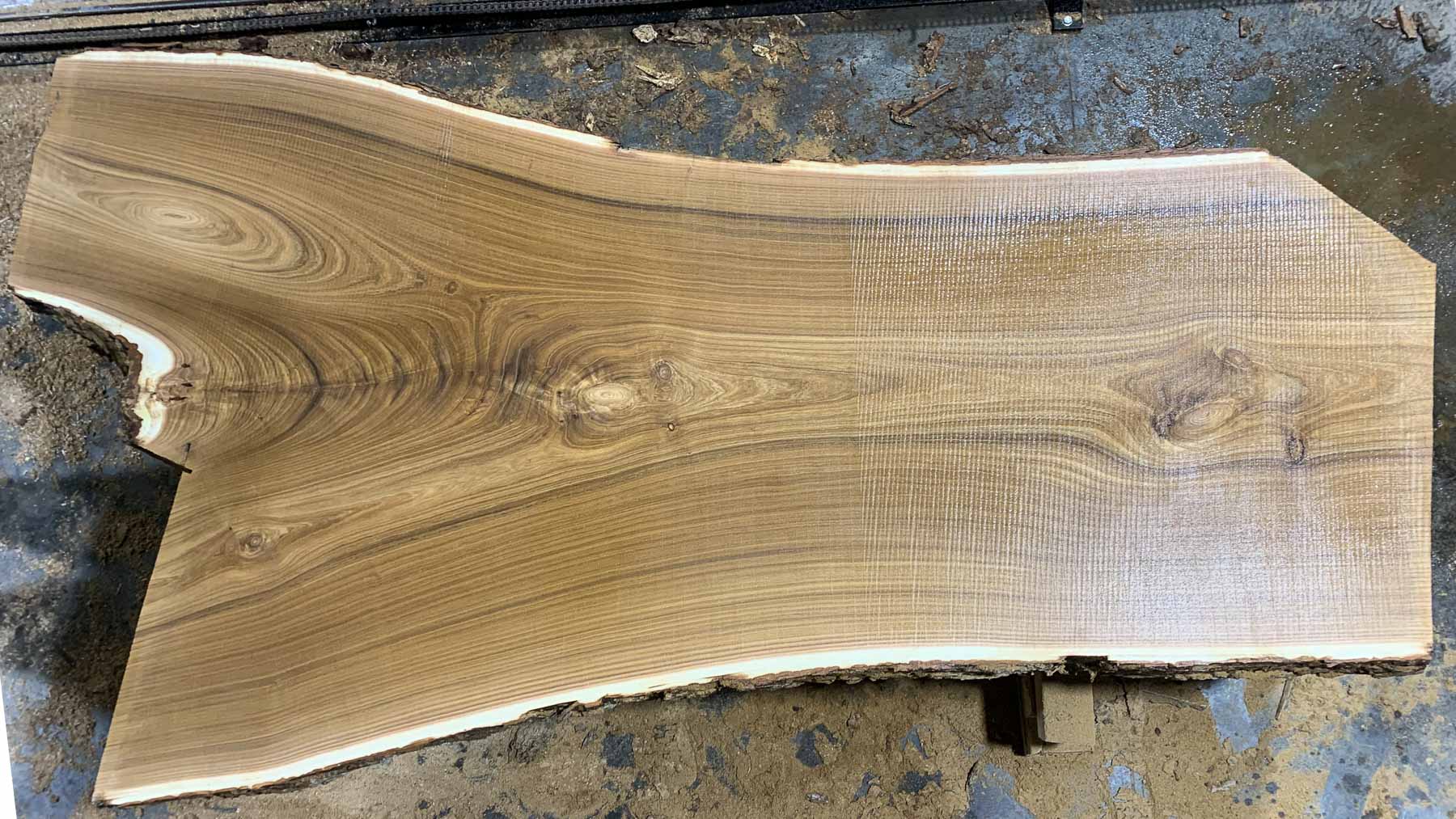- How to Rot a Tree Stump Fast with Chemicals - December 8, 2023
- Portable Sawmill Rental Guide: Potential Rental Options - December 25, 2022
- Best 18 Inch Chainsaw Chains Worth Your Investment - December 19, 2022
Catalpa wood is a rarer choice that proves reliable, durable, and affordable for most applications. Its decent quality and resistance to the elements make it a good choice for outdoor projects, but you can easily craft some unique furniture and other items. Catalpa wood is becoming more recognized as a viable choice for many large-scale companies, small businesses, and woodworking enthusiasts.
It is more affordable, but availability lacks consistency at times. I’m here to enlighten you on what can be done with catalpa wood and give you a new perspective on this underestimated species. It may not be the highest quality wood on the block, but it can be a good compromise on a budget and give you good results. It will help you to save money on boards but specialized work will cost extra, like wooden blocks or intricate carvings.
This is a rather pleasant and malleable wood that is overlooked too often. Perhaps you’ll be encouraged to work with some to widen your perspective. There is a rich history behind catalpa wood as a staple species aiding the growth of America, where settlement areas were commonly fenced with it.
The sturdy frames for aircraft in the first world war were crafted with catalpa trees and had minimal wood shortages. Let’s carve out the details and explore what else makes Catalpa wood special. There are many projects you can do with it that are rewarding!
Catalpa Wood Uses: Bottom Line Up Front
Wood from the Catalpa tree has been used extensively for carving purposes, and many underestimate its usefulness in crafting various other products. Catalpa wood is a workable and affordable material that can be crafted into medium-quality furniture, instruments, sculptures, cabinetry, interior trim, fence posts, and utility wood. It has a unique appearance and can serve as a budget-friendly alternative to other woods with potent rot resistance.
The Catalpa Tree in Nature
The Catalpa Tree is present in North America and is also found in the eastern area of the United States. It can get up to one-hundred feet tall in the wild and four feet in trunk size. You can yield a lot of wood with one catalpa tree, and supplies are usually reliable for large-scale endeavors like building a cabin.
Most catalpa trees are deciduous and have large heart-shaped leaves that catch your eye. They grow fast with a mature tree at around fifty feet. It extends well beyond that as it continues to thrive and nurture the natural landscape. It benefits the ecosystem with abundant foliage that protects various birds and insects.
Thankfully, this species has no population problem, and the growth speed keeps them springing forth after harvesting. Be it in nature or under the power saw; catalpa trees are an excellent resource with many benefits and possibilities. For example, they serve a decorative function in their natural or material state. Many people plant them artistically because of the flowery blossoms and attractive shape that captivates your eye.
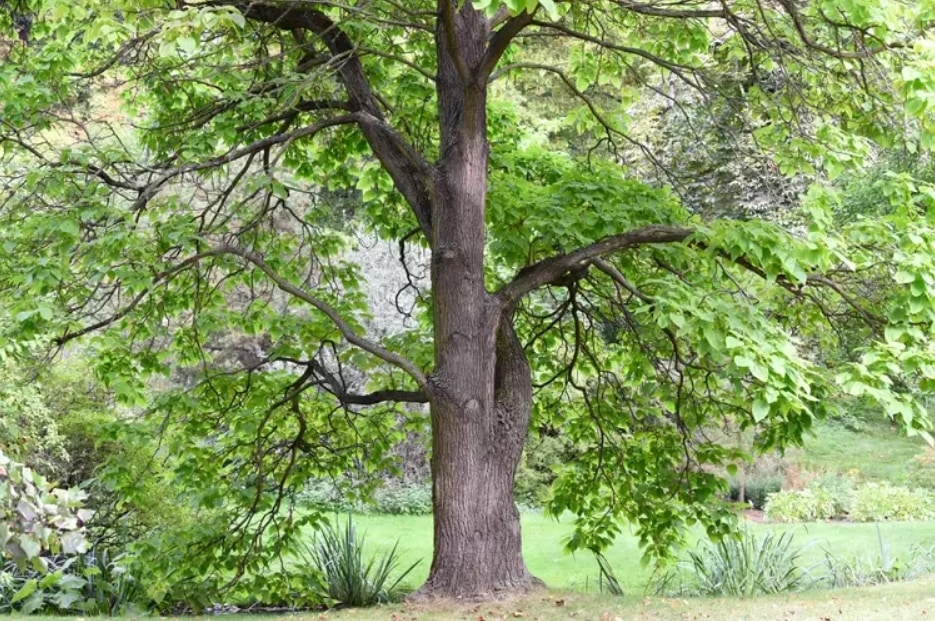
What to Observe When Buying
When purchasing catalpa wood, there are a few things to consider. If you’re doing an interior job like cabinetry, then you’ll need to examine the surroundings, so it matches appropriately. Various shades of catalpa are on the market, and visiting different locations can help with your decision.
The wood is softer but amicable for beginners and is highly malleable. It’s rather soft for a hardwood, so remember when buying that it’s lighter. It might be smoother, but it’s still durable for most jobs. Look for professionally shaped cuts, and you’ll enjoy catalpa wood that’s easy to use.
The scale of your project will determine which materials are necessary. There are versatile grain patterns to observe, so take your time and choose a winner. The item you’re purchasing might influence the final decision. For example, you might opt for a higher quality wood for a new guitar, but catalpa for furniture will be acceptable.
It comes down to individual preference and how you craft or purchase products to enjoy. Buy your wood that is sold professionally in stable conditions. Consulting with your local sawmill is also a way to get ahead and discover the cutting-edge knowledge behind catalpa wood. You won’t have to worry about spending too much on this species.
Where You Can Buy Catalpa
One of the best and most accessible places where you can readily purchase catalpa wood is at any local home superstore. This advantage is that you can examine, feel, and even smell the cuts before purchasing while skipping the wait to be delivered. Any reputable center for home improvement worth their salt should have some high-quality catalpa wood in stock.
You need construction-grade catalpa wood for light or heavy projects, and it’s good to do some math to determine the correct dimensions. Building something is easier when you have the visual product, and grain aesthetics also matter. When online, you never know what you will get. Another option for buying catalpa wood is to travel to the nearest lumberyard.
This is a handy solution that many novices don’t consider, but it works like a charm. Visiting a lumberyard ensures you have more variety, and your chances of finding catalpa are high. The prices might also be better here than at a store. The unfavorable option is to order your wood online, but it can quickly be done.
You save time and energy deliberating in a lumberyard or store and get the wood shipped conveniently to your door. However, most serious woodworkers prefer to see tangible materials. Be advised that many online vendors use reclaimed and recycled wood, reducing the final cost. Here are some reputable sites to consider:
- www.woodworkersource.com
- www.woodcraft.com
- www.woodfinder.com
- Craigslist materials section
- Google Maps for discovering sawmills
Critical Features of Catalpa Wood
Grain Pattern & Color
Catalpa wood is straight and uniform, making it a highly desirable material for woodworking. Interlocking complex grains can be beautiful, but this appeal fades when putting it to work. Simply put, catalpa wood won’t stress you out. It’s becoming more popular among new and experienced woodworkers who want a straightforward and smoother process. It has a coarse and open texture, meaning it has some resistance to the elements.
This might not be as robust as some other species, but it holds its own against threatening weather. It has a spicy and almost exotic subtle aroma that is pleasant. However, some allergies to catalpa have been rarely observed when it comes in contact with the skin.
The heartwood will range from tan to a richer golden brown with neutral shades of gray. The sapwood appears pale gray and makes up only a tiny percentage of the tree. It seems similar to an ash tree and is still used along with heartwood for stunning products. These colors and grain patterns create an inviting appeal for any space, and it’s even better when you craft something yourself!
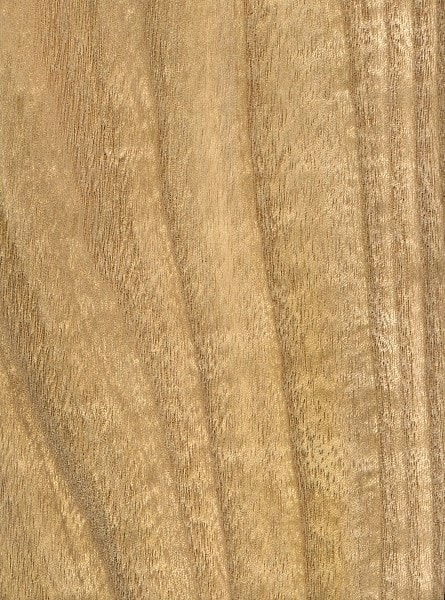
Strength & Durability
Even though it’s a softer wood, Catalpa stands up to the competition as a sturdy choice for furniture that has to endure the consistent weight. It can stand the test of time but will have a shorter life than some other furniture woods. One of the main advantages is that it’s highly durable to rot and resists the elements to a limited degree. It’s a reliable wood for crafting furnishings and smaller items.
Still, it’s mainly used for fences and cabins because of the larger pores that contribute to its integrity against the forces of nature. The strength of catalpa wood is underestimated, but more are realizing the benefits of this elusive choice. It can last for years, and a carving will turn out nicely with increased precision. It’s easy to work with hand or power tools without splitting, and it saws well for an even shape.
There is limited data on its resistance to insect attacks, but what’s available indicates some resistance at the base of catalpa trees. This would make sense, considering it’s a trusted tree genetically inclined towards resisting environmental threats.
Rot Resistance
The secret behind the catalpa being used for larger structures is that it is highly resistant to rot. Imagine building something only to watch it decay quickly away. That’s why some wood can’t be used outdoors, or the creation suffers the consequences. Still, it’s a fruitful experience to learn that not all trees are created equal.
Some have more resistance to weather, insect, and fungal threats. Rot is the sworn enemy of trees, which inevitably applies to the dried material. If you’re looking to do outdoor projects or install a durable fence that won’t rot away, then catalpa is one safe affordable option. This hardwood can resist rot up to a certain point, but no wood is completely infallible forever.
This is an excellent wood for locations such as piers or where water is constantly concerned. The rot resistance is another reason the catalpa tree is underrated and deserves more recognition as a resilient material. If you have a larger structure, then longevity is vital.
The more wood required for your project, the more expensive it will be, and that’s where catalpa wood saves the day with moderate pricing that is worth the investment. Rot resistance gives you more confidence in the final product and ensures you can use it longer outdoors.
Wood Workability
Catalpa wood is exquisitely stable when using hand tools or high-tech machines. It has a smooth quality that is addicting and fun to work with from start to finish. It will be an exciting day when you start working with it because it can serve many purposes and won’t give you a headache. However, it’s not the perfect wood, and sanding issues can create unintentional indentations.
The lighter wood sands better than the early wood, which can produce some challenges when sanding. An adequate sanding block with a ridged back will serve as a solution for issues in this area. It’s one of the final stages of woodworking, so it’s essential to get it right with catalpa. Because the pores of catalpa wood are so large, filling them for an optimal finish is highly recommended. It finishes very well, and you’ll have an easy time gluing it for various projects.
One of the best advantages that increase its workability is that it won’t shrink much when drying, which is terrific news for all woodworkers. Overall, it’s highly stable and workable across many contexts. Because it’s highly versatile, you’ll be given a chance to pursue a broader range of products with catalpa wood!
Common Uses of Catalpa
Carving
Catalpa wood is considered one of the better types for carving because it has a softer quality than other hardwoods and allows for easy maneuvering of hand tools. It is commonly used for artistic carvings for indoor and outdoor wooden ornaments. The straight uniform grain provides for more consistency, but you can also achieve some breathtaking designs through advanced machinery.
Some wooden carvings are even conducted with the guidance of AI through intelligent scanning technology to achieve higher levels of precision. Catalpa is an excellent artistic wood with a natural visual appeal that is highly suitable for decorative and practical purposes. It’s the right choice for items in the rain, such as decorative totem poles outside a restaurant. These carvings are sometimes fragile, and the piece needs to maintain resistance to rot.
Carvings will change over time with age to a beautiful golden brown. Catalpa carvings are better for art because of the softer features. Note that carvings from catalpa work incredibly well with nature themes like birds or animals. The pattern of the grain also works very well with turtle sculptures and makes the shell look realistic. You can also carve bowls, utensils, and anything you can imagine for your home! The grain of catalpa can be mesmerizing and impressive!
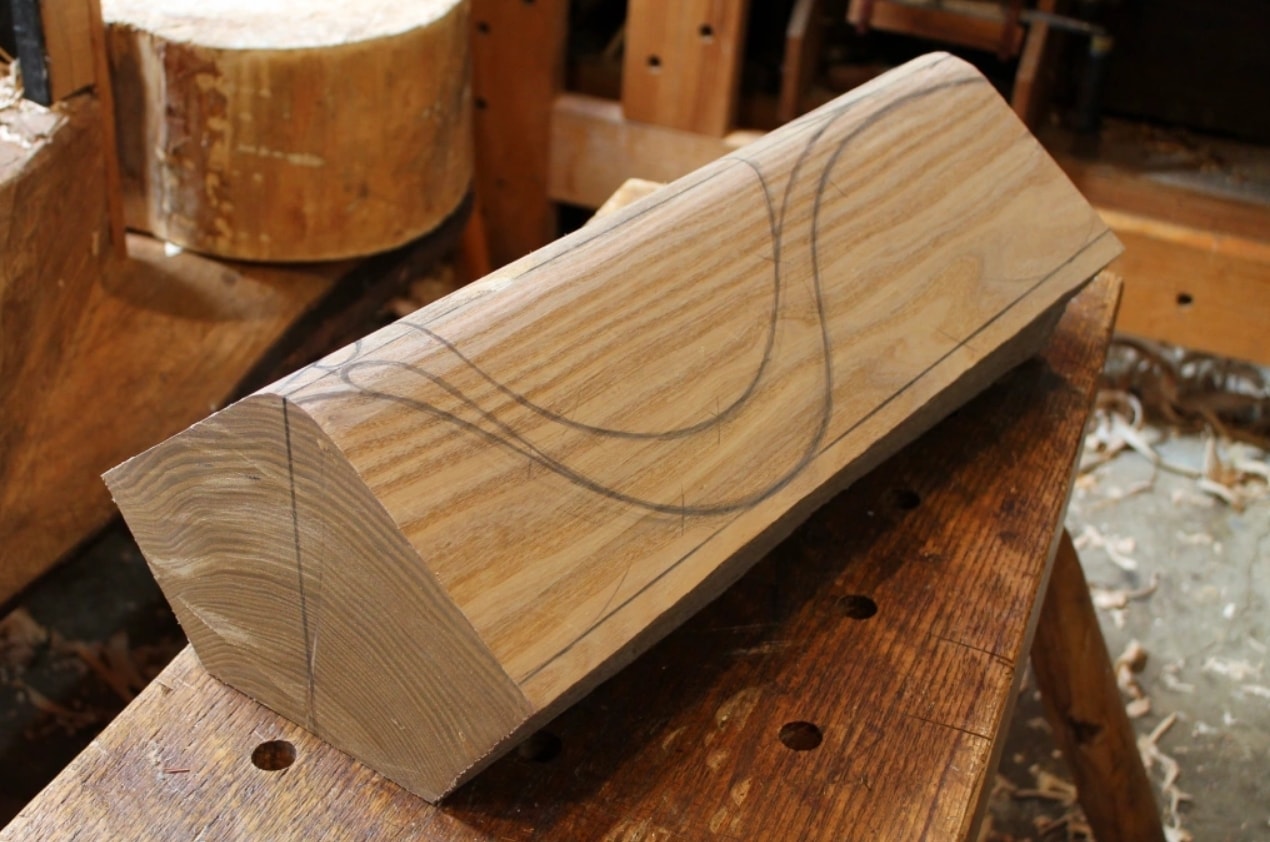
Fence Posts
Catalpa is now being used more for fence posts because it is one of the better and more logical materials for the job. Its rot resistance and affordability make it a reliable option to work with when installing fence posts. These stick in the ground and are exposed to moisture regularly. A good fence must endure high winds with a sturdy quality, and catalpa wood delivers sufficient strength and durability.
Catalpa wood is a choice that tends to be reliable with little chance of breaking due to weather factors. Vulnerable species succumb to the weather and start to rot naturally. Interestingly, this wood has a resistance to extended contact with the ground. It might not be fully resistant to insect attacks, but pests will have more difficulty penetrating fence posts made of catalpa. They are functional, give an attractive look to fences, and can be more easily carved into fancy designs.
This is wise if you want a more luxurious approach to fencing with elegant carvings. This wood has been used for centuries for constructing fence posts and other items. If you have a larger property, fence posts will be more expensive because more material is needed. For most budgets, Catalpa wood is a balanced option to construct a perimeter fence.
Utility Wood
Catalpa wood is handy and serves as an excellent utility wood for many businesses and individuals worldwide. Utility poles, flooring, varying-sized structures, and cabins are all constructed from it and have satisfying longevity. It’s suitable for enduring the elements of cold and wet conditions and can serve companies well. Using this wood for extensive projects where you’ll purchase a lot of lumber is a good decision.
You can use it to craft something quick, like a resistant shelter. This is a wood that serves many functions and covers the bases. However, you might not get a home run, and some people have higher standards regarding flooring or installing new cabinets. It’s the perfect material for laying the foundation for a small affordable cabin or shed in your backyard.
The versatility of Catalpa wood for a lower price makes it stand out among others. It can easily conform to your professional needs or for simple additions around the home. You can use it to build a storage unit for your firewood or craft an attractive fence that will increase security. There are undoubtedly new uses for this wood waiting for you to discover!
Cabinetry
You’ve probably been in a position before where you need new cabinets or a similar installment that makes you dread the final cost. If you’re looking for a moderately priced wood that’s still durable and reliable for cabinetry and similar renovations, then catalpa wood has you covered. It has proven itself over the years with breathtaking results that speak to its usefulness and aesthetic charm.
This wood cuts cabinetry, but you should know there are better and more luxurious options if you’re willing to pay the extra. It’s not limited to the kitchen because you can install cabinets in any room. You will gain savings when choosing this middle-ground option, which will give you a satisfying result for the price. The grains of catalpa are comforting and have a heart-warming vibe of nature in your home.
Choosing the proper catalpa cabinet set will be a determining factor of the final result. You always want to find the best quality wood, but some may consider this option as settling for less. However, it has proven to be trustworthy and durable in the long term. It’s nothing extraordinary when you choose this type of wood, and very much of standard quality. That being said, the results are sometimes more attractive than you would expect for traditional cabinetry. You can trust it to get the minimal job done.
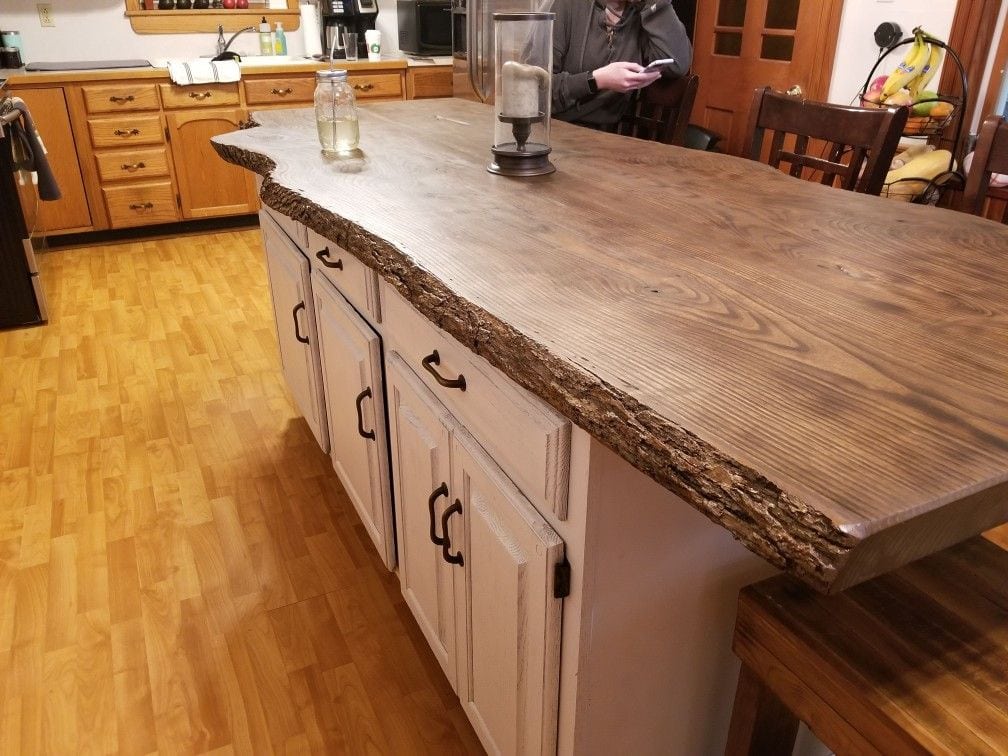
Furniture
There are different grades of furniture that will last for varying periods. Of course, the structural integrity of any piece will be determined by the materials used. Catalpa wood isn’t the best for furniture, but it works and gives you decent longevity. It’s an affordable alternative to other, more luxurious woods, and knowing your preferences will ensure you make the right choice.
It’s sturdy and makes great entry-level furniture if you’re moving into a house for the first time and need to furnish things quickly and affordably. The rot resistance is appropriate for humid climates, but the appearance might not be for everyone. Catalpa wood has a nice appearance and can give you a rustic coffee table, chairs, couches, and many other items.
Because it’s so easy to work with, it’s a good choice for beginners seeking to carve their first piece of furniture. You can easily carve out the more minor details and practice with this wood because of the malleable properties that make it better to use. Your tools will work well with this wood when crafting more oversized items, and the feeling of creating them yourself is like no other while saving money. It’s appropriate for moderately-sized furniture, and you may want to consider another wood for larger pieces.
Instrument Tonewood
Catalpa wood is a less common type for creating guitars and other instruments, and it might fall short compared to more appropriate options like basswood or mahogany. That being said, catalpa wood has decent stability and resistance to rot, traits that are relevant when buying an instrument. The last thing you want is your guitar to wither away because of moisture and natural rotting.
Since these trees are widespread in Asia, it’s common to see oriental instruments crafted from this species, like the Chinese Pipa or the tranquil guqin. Catalpa makes an excellent tonewood for the back and sides of guitars, resulting in a clear and bright tone that projects well and sounds magnificent! It won’t give you many overtones, though, which might be a dealbreaker for some.
Regarding wooden instruments, it’s highly underutilized, but it certainly exists as an option. There aren’t many commercially-crafted electric guitars using catalpa wood solely. Still, It has a distinctive lightweight quality that might be suitable if you’re a player who stands a lot. Most don’t think about the weight of an instrument when shopping, but it’s a critical detail that can make a difference in functionality. Lighter is generally better when choosing wood for your musical project or purchase.
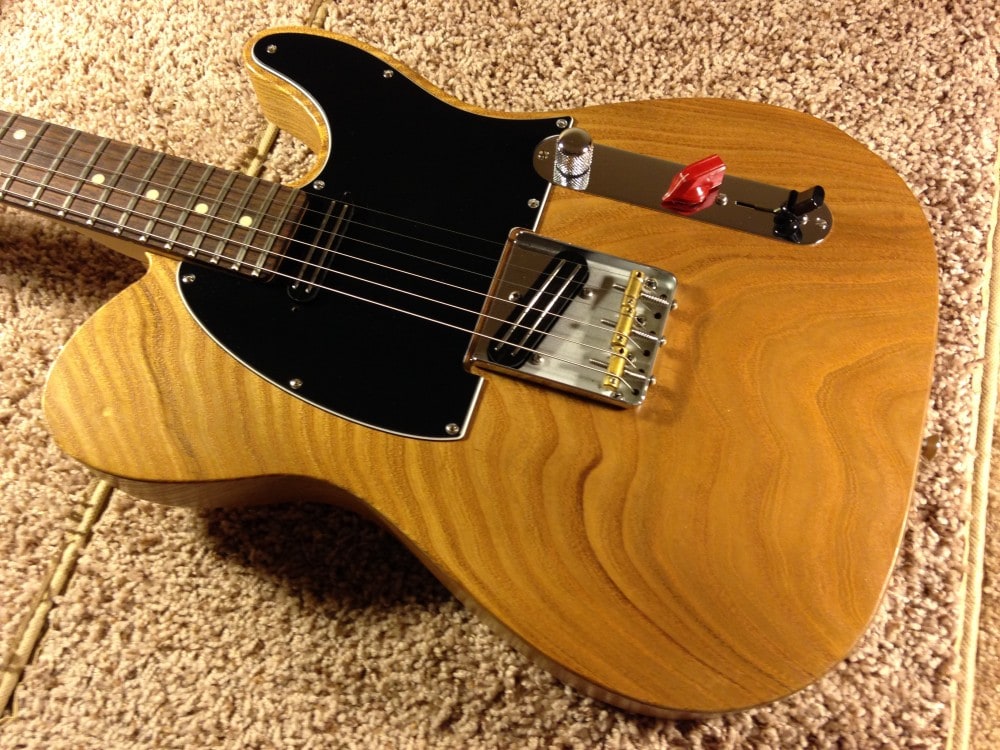
Industrial Crates & Decorative Chests
Catalpa is a viable wood for industrial businesses with mass-production needs. It has the durability and strength to handle various equipment for the long term when loading or unloading. Its tendency to dent is irrelevant here because you’re dealing with a protective crate used for transport. Choosing a hardwood like catalpa for this job is viable, but it gets even better considering the lightweight properties.
If you’re already moving something heavy, you don’t want to add insult to injury with a heavier wood species and make the job harder. It’s suitable for storing various items in a potentially damp environment because it will resist the elements and keep other products safe for long periods. On the artistic side, you can easily carve some decorative chests with impeccable detailing.
The grain is friendly for novices and helps you get a feel for the techniques with a forgiving wood. You will grow in skill over time, and catalpa is the perfect practice wood to make some appealing chests. These can range from small jewelry boxes to larger treasure chests to store various knickknacks. Additional items might include pallets, ramps, and other types of containers of all sizes.
Catalpa as Firewood
Here we will answer the burning question, “can catalpa be used as firewood?” The answer is a simple yes, but there are some details you need to know. When you set a flame to catalpa wood, things will seem okay at first, but the main problem comes with sustaining that flame for long periods. That’s because the wood burns so quickly that you’ll probably feed the fire more than you desire.
That said, using catalpa as firewood has a time and a place. Shorter woodland excursions where you need a quick fire to warm up are ideal. Most people don’t like using catalpa wood for a prolonged fire session because it’s inconvenient and inefficient. Despite this, assuming the wood is thoroughly dried, you will get excellent heat from burning. The smell of wood is also essential for any outing because it sets the mood for the outdoors!
The consensus is that catalpa has a subtle spicy aroma that isn’t overbearing. However, some find the smell intolerable and would never choose it. The only way to determine your personal preference is to spark up some and put it to the test. Seasonally, catalpa wood is best used in moderately cold temperatures, like in autumn or early spring.
Regarding safety, the catalpa wood isn’t poisonous, but the leaves and roots are highly toxic, so refrain from burning them to preserve your health and the surrounding environment.
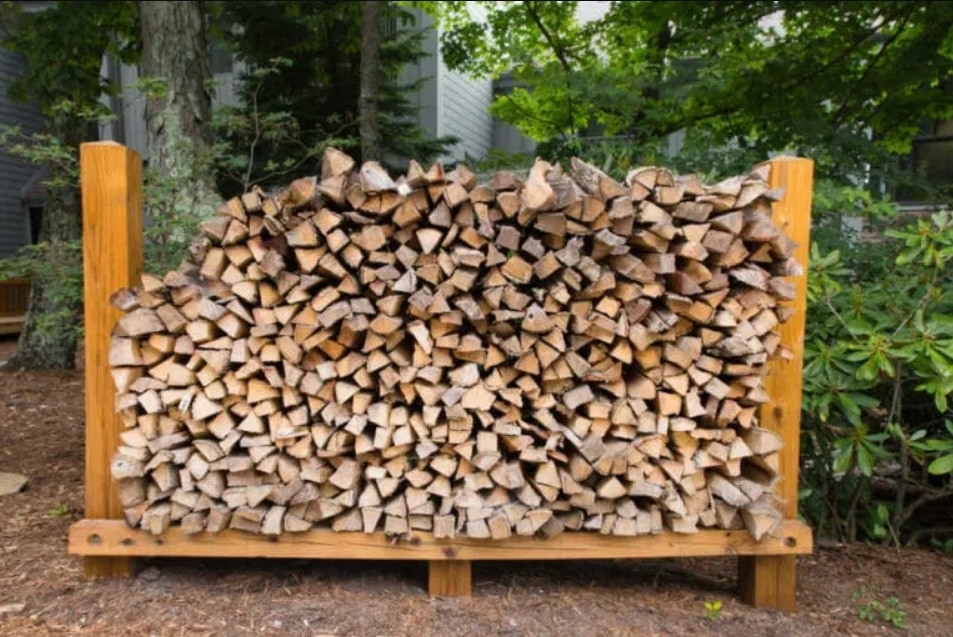
Alternatives to Catalpa Wood
- Mahogany
- Basswood
- Bamboo
- Oak
- Walnut
- Rosewood
- Maple
Advantages of Using Catalpa
- Catalpa is a highly durable wood
- Pleasant to work with most of the time
- It can be performed with tools or machines
- It Glues, turns, and finishes well
- A moderately-priced wood for high quality
- Readily available on the current market
- Catalpa trees are in abundance, so there is less guilt
- Looks better with age
Disadvantages of Using Catalpa
- If you’re searching for the BEST wood, Catalpa isn’t the answer
- Catalpa makes for minimum-quality of cabinets
- A low shrinkage weight
- It won’t last as long as other woods
- Catalpa is the low end of the spectrum for furniture
- It’s considered a lower-quality tonewood for instruments
- Aesthetics might not be preferable for some
- Tends to dent
Frequently Asked Questions
Question: What is catalpa wood most commonly used for?
Answer: Catalpa wood is widely used for carving, but there are many other uses that people tend to overlook in the woodworking world. For those who do, it includes making unique furniture, cabinetry, fence posts, and artistic sculptures.
Question: How much does catalpa wood cost?
Answer: Keep in mind that prices vary depending on where you get the catalpa wood. The average would be $2.50-$12.40 per board foot. Moderately priced, but it’s not considered cheap wood. It’s more middle-ground in pricing and gives high quality for many projects.
Question: Is catalpa wood durable in the long run?
Answer: Catalpa wood is moderately durable to preserve any item or structure. It can create peace of mind for woodworking projects you know will last. Although the final result is stable, it sometimes requires prudence to work with this wood. Larger pieces of furniture might need better wood if you want to keep them as a family treasure.
Question: Can catalpa wood be used in outdoor projects?
Answer: Since catalpa wood has some outstanding rot resistance, it is suitable for the outdoors, where rain inevitably falls on particular objects. You can craft or buy outdoor furniture that won’t rot away if left outside. However, it’s not ideal wood for construction and is often used for larger outdoor structures such as fences or posts.
Conclusion: Catalpa Is Versatile & Affordable
In summation, catalpa wood is a unique hardwood that is underappreciated for the most part. However, there has been an increase in the application of this wood to various industries because it’s cheap while still giving resistance and durability. It is highly craftable and easy to carve more minor details with precision and exceptional reliability.
It’s excellent for larger-scale projects like perimeter fencing, and the large pores make it ideal for resisting decay. Catalpa wood is a middle-ground investment that will serve you well in the shop or when buying viable products. You should be mindful of the sanding process when working with it because it can be tricky.
Knowing what you’re up against will help you remain prudent when giving catalpa wood that desirable smooth finish. Speaking of finishing, I hope this guide has helped you realize the benefits and uses of catalpa wood! It’s a species that is gaining more attention and is worth the hands-on experience, even if you carve something simple. Try it out and see what you think of the final result!


